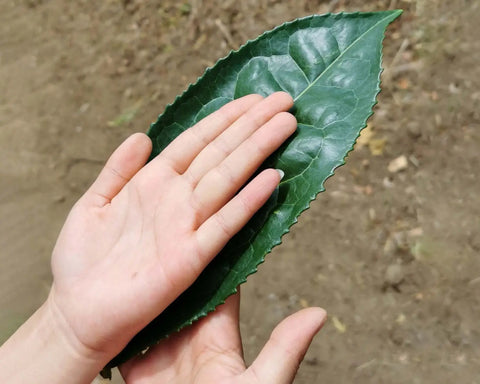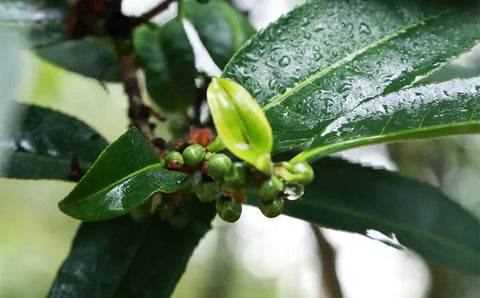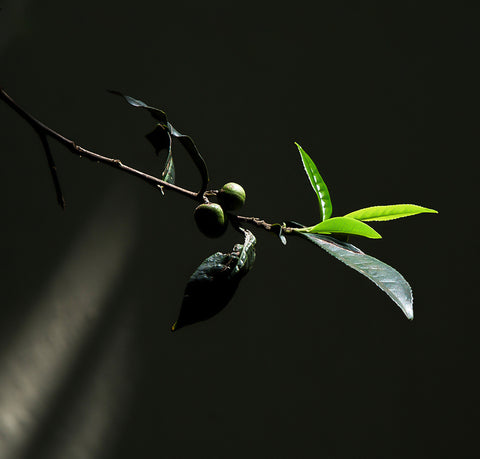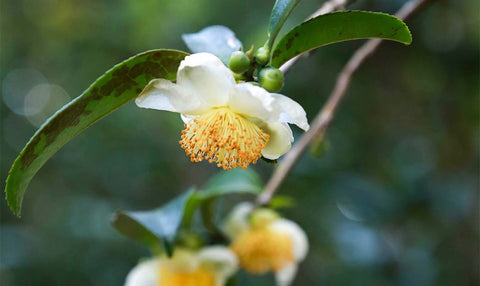Discover Tea Plants Behind Pu'er Tea's Creation
Welcome to the world of tea! In this blog, we will be exploring the magic of tea beyond the cup. We will be delving into the wonders of tea leaves, fruits, and flowers. You will learn about the renowned "Dashu Cha" or large-leaf tea plants of Yunnan, the nutritious tea fruits, and the enchanting camellia flowers. You will discover the incredible diversity and benefits of the tea plant. Let's start this exciting adventure and uncover the captivating secrets of one of the world's most beloved teas.
TEA LEAVES
If you're a fan of Puerh tea, you may have heard of "Dashu Cha" or Large-Leaf Tree Tea. This type of tea is made from Yunnan large-leaf tea plants, which are mostly arbor-like with a tall canopy. These plants can grow up to 5-6 meters naturally, and even up to 20 meters at their tallest. The leaves of these plants are quite large, with an area of over 40 square centimeters.

Bestsellers
The Yunnan large-leaf Pu'er tea is considered to be the wildest and oldest tea plant in the world. This variant has a higher amount of organic compounds in comparison to the medium and small-leaf teas. It contains 30.00% to 33.00% polyphenol content, 4.00% to 5.00% caffeine content, and 241.11 mg/g catechin content. These levels surpass those found in small-leaf green tea, Fujian small-leaf tea, and Yixing small-leaf tea.
TEA FRUITS
Tea plants have a primary reproductive organ known as tea fruit. It comprises of seeds and a fruit shell and grows from the ovary wall and ovules of tea flowers. The fruit shell safeguards the seeds and also promotes their dispersal. The shape of the tea fruit varies based on the number of seeds present inside. It can be nearly circular with one seed or shaped like a plum blossom with five seeds.

The fruit shell of the tea plant initially appears dark green, but as the fruit ripens, it changes to a brownish hue. The fruit can be utilized for extracting tea oil, which is safe to consume, whereas the leftover residue can be converted into a powder for cleaning kitchenware. Tea oil has a tiny molecular structure that is readily absorbed by the human body, surpassing even olive oil. Regular consumption of tea oil can help to decrease blood lipids, regulate blood pressure, and prevent cardiovascular illnesses. Furthermore, it has anti-cancer properties and enhances immunity.

Tea fruit is a way to propagate tea plants. The mature fruits are used for breeding seedlings that are later transplanted into tea gardens through sexual reproduction. The other method involves cutting branches for asexual propagation, and the transplanted branches are rooted before being transplanted into tea gardens. However, in Xishuangbanna, people prefer the sexual reproduction method to maintain the purity of tea plant varieties.
TEA BLOSSOMS
Camellia flowers are the primary reproductive organs of the tea plant and are bisexual in nature, composed of a calyx, corolla, stamen, and pistil. While traditionally responsible for the plant's reproduction, advancements in asexual reproduction techniques like cutting have made this unnecessary. These flowers typically bloom between October and February of the following year, though the exact timing may vary based on factors such as climate and variety.

Camellia flowers contain a variety of beneficial components, such as protein, tea polysaccharides, tea polyphenols, and antioxidants, which are more abundant than those found in tea leaves. These flowers possess several health benefits, including detoxification, antibacterial properties, blood sugar regulation, anti-aging effects, cancer prevention, and immune system enhancement. Additionally, camellia is an excellent source of high-quality protein, similar to the renowned antioxidant rosemary plant.
← Older post Newer post →






